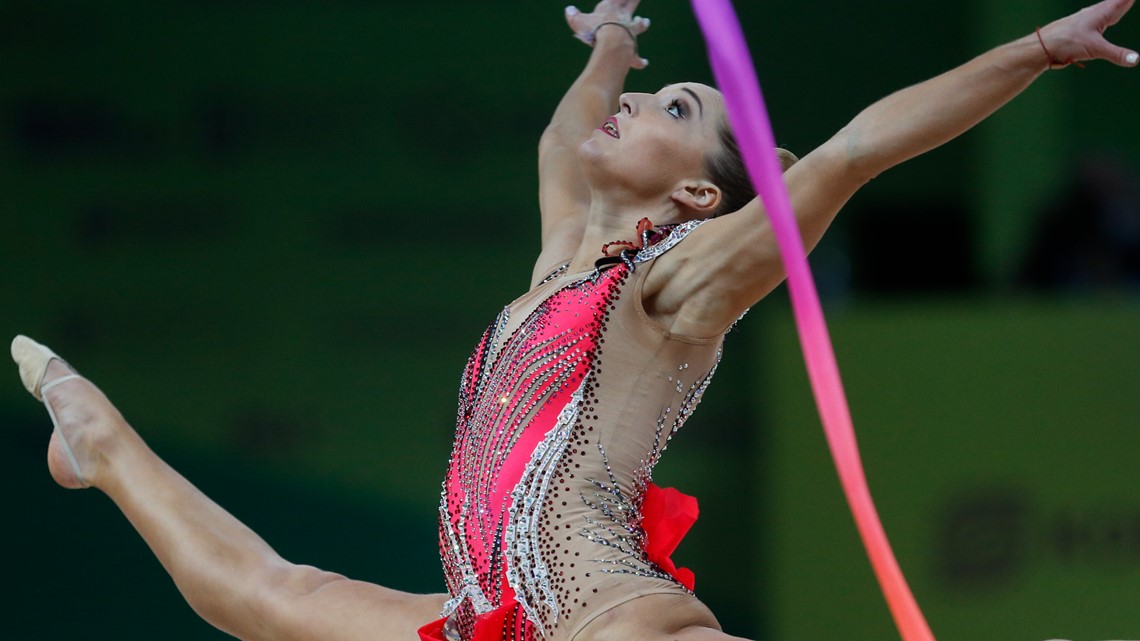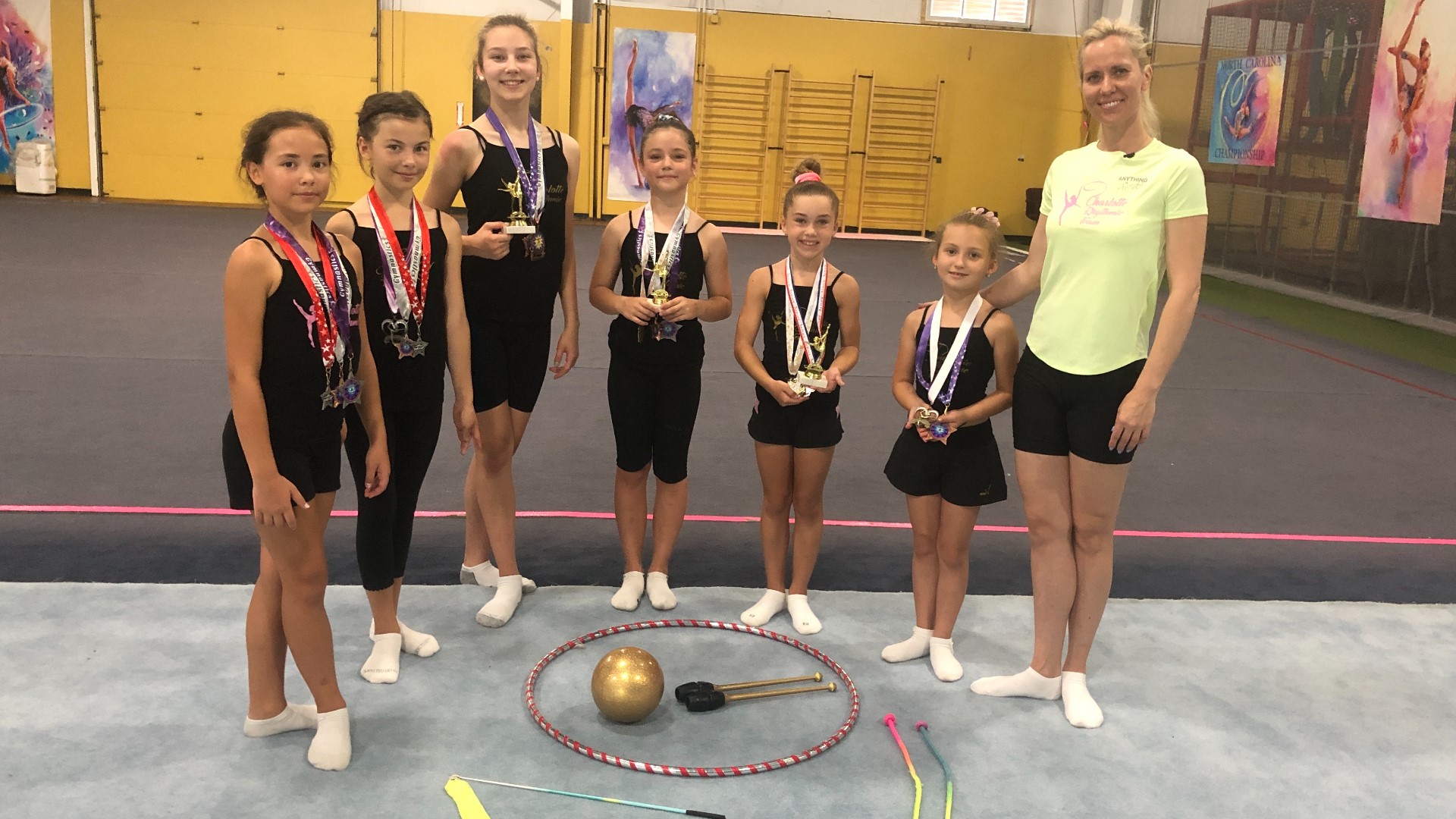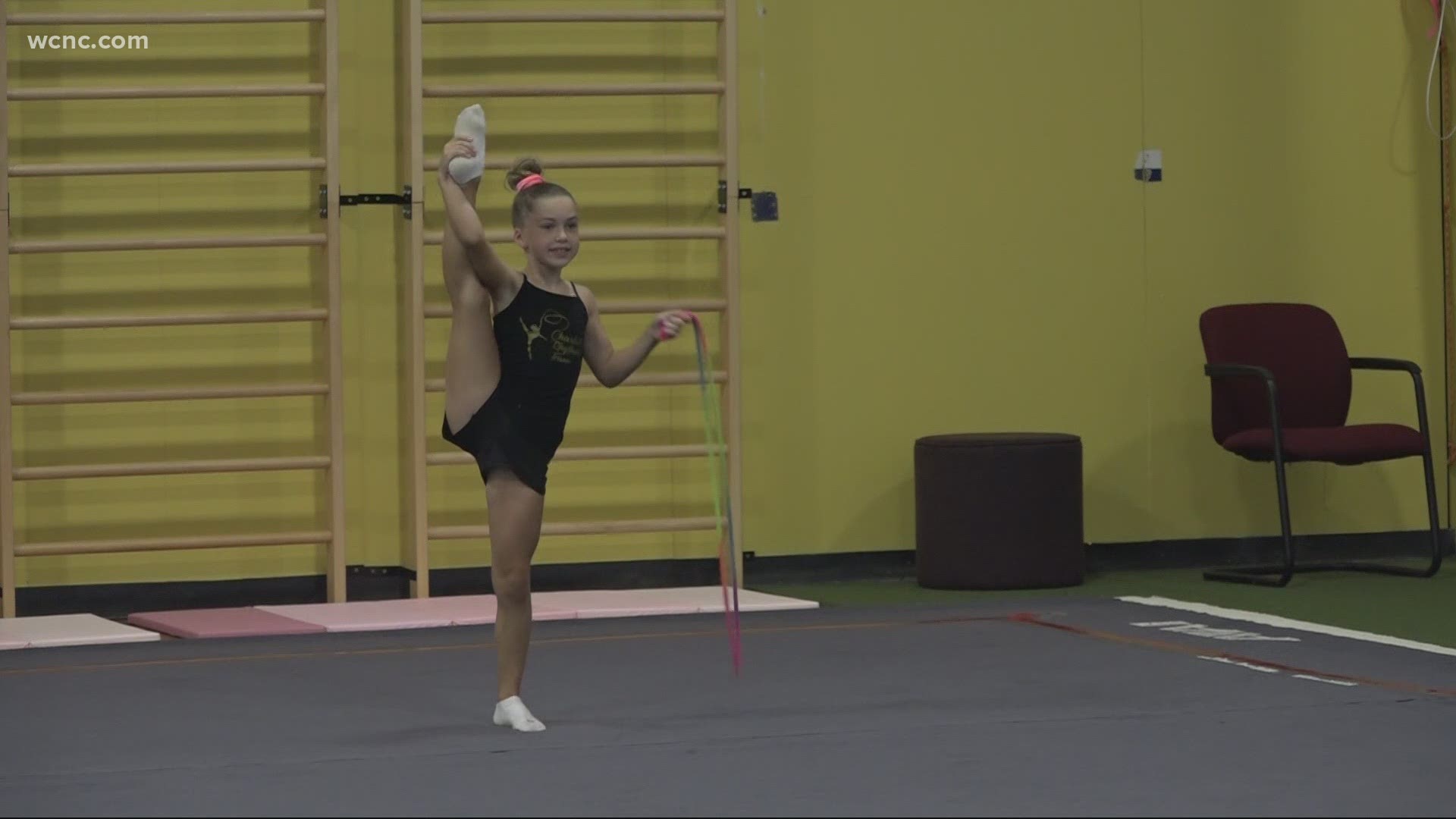INDIAN TRAIL, N.C. — Head Coach Anna Sokolova-Wilson arrives at the Charlotte Rhythmic Gymnastics Center in Indian Trail, North Carolina, every morning before 8 a.m.
Her girls all show up at around the same time, eager to hit the mat.
Sokolova-Wilson coaches Rhythmic Gymnastics and has done so for the past 21 years, even leading the Rhythmic Gymnastics Group team to its first medal at the 1998 Rhythmics Gymnastics National Championships.
Before becoming a coach, Sokolova-Wilson was a former Russian National Team member where she represented Russia at many international competitions.
What is Rhythmic Gymnastics?
Sokolova-Wilson said rhythmic gymnastics is one of the most fascinating Olympic sports.
"It's combined dance, flexibility, gymnastics, ballet, musicality," Sokolova-Wilson said. "So you name it, most graceful sport that you can think of for young ladies ages."
Sokolova-Wilson said the sport is actually very popular in Europe and Asia, but she said she hopes the sport will continue to grow in the U.S.
"Especially since the United States team were able to make it to Olympic Games," Sokolova-Wilson said. "So now we're well represented here as well."
What skills do you need to become a Rhythmic gymnast?
Desire. That's what Sokolova-Wilson said is most important.
"Everything else will come with hard work," Sokolova-Wilson said. It's a lot of patience involved. We have to do a lot of stretching, a lot of you know, repetition of the same elements to make them perfect."
It's definitely a sport you would need to have the passion for, Sokolova-Wilson said.
How to get into the sport
With the right coaching, Sokolova-Wilson said pretty much anyone can get into the sport. She said the younger you start, the easier it is to pick it up.
"We start processing from the very early age and let the girls get adjusted to the equipment," Sokolova-Wilson said. "So we have a rope, we have a hoop, clubs, and ribbons."
For the little girls, Sokolova-Wilson said she will start them on a floor routine without equipment and then move through the rope, the hoops, the ball, the clubs, and finally the ribbon.
What you will need
Competition area
- Material: carpeting
- Length: 13 m x 13 m (approx. 42.5ft. square)
Rope
- Look for swings, circles, rotations, wraps, unwraps, figure-eight-type circling movements, throws, and catches of the rope. Gymnasts also leap and jump through the open or folded rope, held by both hands.
Hoop
- Common movements with the hoop include swings, rolls, tosses and catches; spins, passes through and over the hoop; rotations of the hoop on the floor, and rotations of the hoop around the hand and other parts of the body. Most impressive here are the high throws and complex techniques for catching the hoop in a different fashion each time.
Ball
- Waves, circles, throws and catches; movement with the ball balanced on the hand, bouncing, and rolling the ball on the floor and along parts of the body are all key movements.
Clubs
- Swings, large circles, small circles, mills, throws and catches; and rhythmical tapping are common tricks.
Ribbon
- Ribbon routines are comprised of snakes, spirals, swings, circles, throws and catches; and figure-eight movements. The ribbon must remain constantly in motion.


Contact Charlotte Rhythmic Gymnastics Center
- Follow them on Facebook at Charlotte Rhythmic Gymnastics Center
- Instagram @charlotterhythmic.
- Or visit our facility at: 3016 Sardis Dr, Indian Trail, NC 28079
Locked On is the leading podcast network for local sports and is owned by WCNC Charlotte's parent company TEGNA.
Listen to Locked On here.
All of WCNC Charlotte's podcasts are free and available for both streaming and download. You can listen now on Android, iPhone, Amazon, and other internet-connected devices. Join us from North Carolina, South Carolina, or on the go anywhere.


